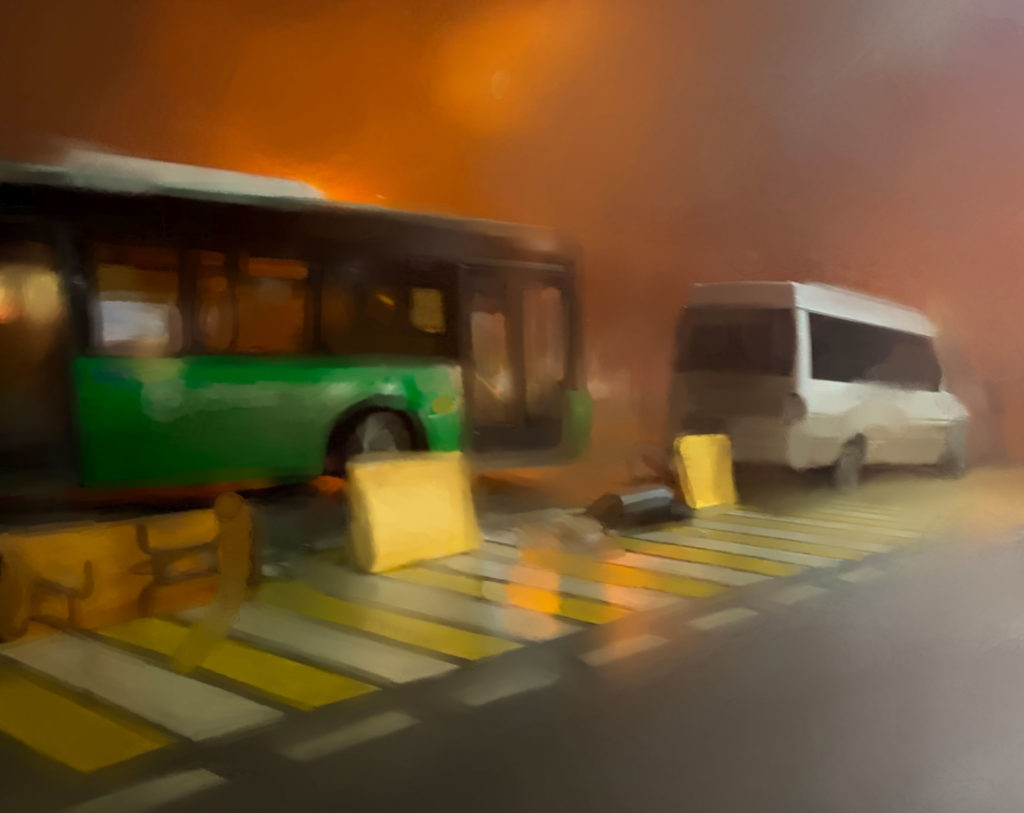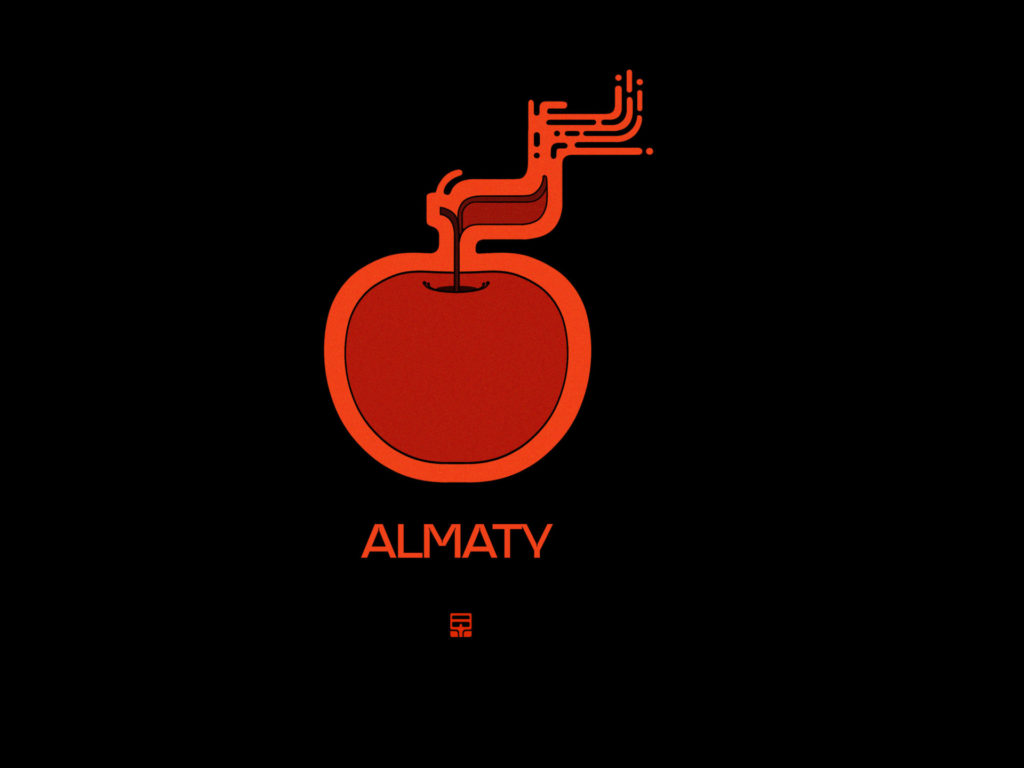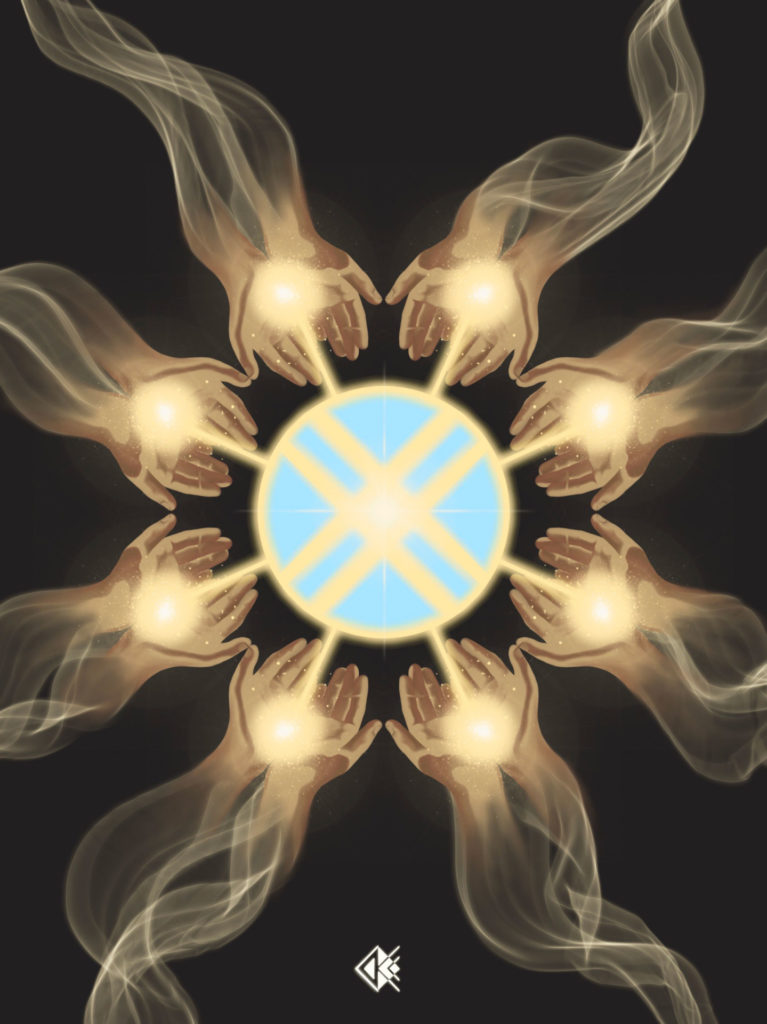The muffled sounds of heavy gunfire echoed across Almaty’s wide boulevards and carried through the empty streets toward the surrounding Alatau mountains. With the internet down, people panicked as they tried to check on friends and relatives. It was Jan. 5, and the tension in Kazakhstan’s largest city had been building for days, triggered by anger in the western part of the country at a jump in fuel prices but quickly morphing into something deeper and far harder for the government to contain: collective rage over endemic corruption, a lack of civil rights and economic inequality.
Zhanel Shakhanova knew something was terribly wrong as soon as she woke up that day and tried to go online. The 30-year-old freelance artist and political activist was used to certain websites being blocked during protests in the country, but this time there was a full communications blackout. It was the first real sign of the trouble to come. Now out in the city, she could see a patina of horror unfolding in front of her, real-time scenes of violence and chaos that even the most paranoid regime could not conceal from its citizens. Hundreds of people would be killed and thousands detained by the time the unrest was over.

Kazakhstan, a former Soviet republic the size of Western Europe, is nominally a democracy. And yet for 30 years, its political elite have hacked away at civil liberties and political opposition. Nursultan Nazarbayev, who ruled the country from its 1991 independence until 2019, outlawed most forms of political protest, gutted independent media, and oversaw several rigged and opaque elections. Many social scientists and regional analysts argued that Kazakhstan’s supposedly apolitical population would never push back against the regime. Those brave few who tried have faced retaliation. In 2011, security forces in the town of Zhanaozen opened fire on oil workers who had been on strike for seven months demanding better working conditions. Then, in 2016, when protesters gathered in the nearby oil hub of Atyrau to protest land reforms, a veteran activist, Maks Bokayev, was jailed for five years and banned from further political organizing.
Despite it all, Kazakhstanis rose up in early January — and their country was plunged into informational darkness. During the blackout, those of us who tried to make sense of what was happening had to rely largely on the reporting of mostly Russian news outlets, which had been given access to help the Kazakh government control the narrative surrounding the events. Now, with the blackout lifted, Kazakhstanis and international observers are working to piece together what happened on the ground. Through a series of interviews conducted online and through encrypted messaging apps, we are slowly learning what it was really like to be in the middle of all that hope, fear and chaos.
This is the story of just one small group of Kazakhstanis, a collection of artists who came to embody the growing chorus for change in their country. Even as the bullets were flying, they sketched, painted and doodled. Their work now feels like the purest form of reportage we have on the protests and their bloody aftermath.
The day before the internet blackout, the air had felt charged with excitement as Shakhanova marched through the streets of Almaty. She was there to show her solidarity for the few dozen truck drivers who had started the protests on Jan. 2, some 2,000 miles away by land in Zhanaozen.
“We were shouting slogans and demanding political reforms. People were watching us from their balconies,” she recalled. Some of her friends were detained that day for demonstrating, but she stayed out — hopeful that this time real progress was possible. By late evening, she found herself at the Almaty Arena — an ice hockey and basketball sports complex — where three large groups of protesters had converged to sing the country’s national anthem before marching together to the city center.
“There were many people from our political movement but also others — older and younger — and no one was armed. It was peaceful,” she said.
That night Shakhanova went home feeling tired but inspired. When she woke up the following morning, however, her hope soon turned to fear. Finding the internet cut and the sudden information vacuum unbearable, she decided to go to Republic Square, the center of the protests in Almaty. It took her far longer than it should have. All public transport had ground to a halt, and taxi drivers were avoiding the area. Traffic lights were deliberately stuck on red to discourage any cars from moving. When Shakhanova eventually reached the square, she found the mood had changed from the day before. Groups of men were carrying weapons improvised out of pipes. On Satpaev Street, a long road running east to west through the middle of the city, some people were looting restaurants while others tried to stop them.
“There was shooting. People were pleading with drivers passing nearby to stop and take the injured to the hospital. It was utter chaos,” she said.
Almaty is not Kazakhstan’s capital, yet it is regarded as the intellectual and artistic heart of the country. Over 1.5 million people live there, and on Jan. 5 many of them were torn between hiding in their homes and taking to the streets. Across the city, groups of men that were not associated with peaceful protesters smashed into shops and stole whatever they could find. Cash machines were busted open and emptied, cars pushed over onto their hoods. On the southern edge of Republic Square, the six-story city hall was on fire. Shakhanova later drew the scene, sketching protesters clashing with security forces in the foreground while a steel fence crosses the sky, symbolizing the government-imposed crackdown and information blackout.
It had been weeks since the protest when we first tried to contact Shakhanova for this essay, but it still took us several days to reach her. Although the internet was working again, she was ignoring any messages sent to her on social media — scared of what they might say. After the communications blackout was first lifted, she had reopened her Instagram account only to find herself inundated with threatening and insulting messages over her support for the protesters.
“One of my colleagues said that she feels useless in situations like this because she can’t help anyone physically. She’s not a doctor, she’s not in law enforcement, [and she thinks] her art is useless to people,” Shakhanova told us. “But I think the fact that our art [about these events] is now being widely shared on social media shows that our reflections resonate with many people.”
In times of upheaval, art can serve the dual function of documenting events and shaping social values. With its authoritarian targeting of communications networks, Kazakhstan’s government tried to block both processes. It failed. Unable to shut down the internet forever, the regime now must contend with the legacy of its actions being immortalized on reopened social media networks, with photos of prisoners tortured in detention now widely available online. Kazakh artists like Shakhanova, meanwhile, have responded with sketches and paintings that speak to their country’s collective trauma and yearning for justice.
“I will be thinking about these events for a while,” she told us over Zoom from her apartment in Almaty, her dog Larsik playing on the floor next to her. One of the recent drawings she uploaded to her Instagram page depicts barricades and abandoned vehicles shrouded in fog, with the orange glow of fire reflecting on the street. The colors are bright, but blurred and haunting. “I won’t wake up tomorrow and start painting something unrelated, something beautiful, because what happened will stay with me for a long time,” she added.
During the height of the unrest in Almaty, Shakhanova had to work from her parents’ apartment because she could not safely reach the studio a few blocks away that she shares with several other members of an art-activist collective called Mata. One of her friends, Nurakhmet Nurbol, was unable to leave the studio for a week because of the violence. Occasionally able to reach him by phone, she could hear gunshots in the background as they talked.
Nurbol was unharmed, but the city did not fare well. On the night of Jan. 5, as Almaty burned, Kazakhstan’s government described protesters as terrorists trained by foreign powers and requested support from the Collective Security Treaty Organization (CSTO) — a military alliance that includes Russia, Belarus, Kazakhstan, Kyrgyzstan, Tajikistan and Armenia. More than 3,000 troops, most of them from Russia, descended upon Almaty on Jan. 6, establishing checkpoints and spreading out through the streets, in an unprecedented move that demonstrated Moscow has geopolitical ambitions that threaten democratic movements across post-Soviet Central Asia.
Even the artists who stayed away from the chaos in the city center have found themselves struggling to make sense of these events. It’s not just the violence that has left a mark: The mundanities of everyday life that people previously took for granted were suddenly shown to be vulnerable to the government’s whims.
“Thank God we had some cash on hand because it was impossible to use our bank cards,” said Stanislav Lipskiy, a 34-year-old artist and designer. “Many stores were out of bread and some other groceries. The shops that had them had long lines in front.”

Lipskiy is originally from western Kazakhstan but has lived in Almaty since he was 18. Dressed in a black Superman T-shirt and sporting AirPods, he also talked to us over Zoom. He was understandably succinct when discussing the violence in the city, seemingly still coming to terms with what he had been through.
“The government must listen to its citizens; there must be some sort of dialogue with society,” he said. “The government should not escalate the situation to the point where the city center burns.”
There are similarities between the jarring scenes of foreign troops combing through Almaty’s streets and the early days of the COVID-19 pandemic, when a strict lockdown was imposed on the city. Lipskiy attempted to capture these parallels in his art. “During the unrest, I tried to distract myself by working on unrelated illustrations, but it was hard to turn off my brain,” he told us. As he sketched, he recognized similarities between the oppression outside and a picture he had been working on at the beginning of the pandemic. The checkpoints and armored personnel carriers he depicted back then now seemed even more ominous. To bring the picture up to date and make it relevant to this violent new era, he gave it a more disorderly, chaotic feel so it resembled a piece of military camouflage.
On Jan. 15, as the CSTO troops were gradually withdrawing from Kazakhstan, the government made a token effort to quantify the damage in Almaty: 149 people dead, 243 buildings in need of reconstruction and more than 1,000 people arrested. Civil rights activists are certain that the real toll is far higher, yet even these official numbers confirm that January’s unrest was the biggest upheaval in Kazakhstan since independence. Later that same month, the government put the death toll for the entire country at 225. But it still hasn’t released the names of the dead, forcing people to crowdsource the information on social media.
Madina Zholdybekova, a 30-year-old Kazakh artist based in London, likened the despair she felt over the crackdown to being an orphan. She was in Nuremberg, Germany, when the protests started and tried desperately to contact her relatives in Kazakhstan. In the end, she put her feelings into her work to break what she described as “the deafening silence of the January tragedy.”

Speaking to us via the messaging app Telegram, Zholdybekova said it was the Swiss legend of William Tell that first came to mind when she thought about the protests — in part because Almaty is believed to have been named after the Kazakh word for apple. Inspired by the thought, Zholdybekova painted a young boy smiling with his eyes closed, trusting that his father would successfully shoot an apple from the top of his head, just as he does in the folktale. But in her painting, the boy does not realize that his confidence might be tragically misplaced. On his forehead she painted a target composed of Kazakh ornamentation, waiting for the arrow to hit.
Even as she worked on the piece, Zholdybekova felt the heavy weight of its symbolism. “When I drew a red apple in an early sketch, all of a sudden red paint flowed down on the forehead of the drawn boy. At that moment I was very scared,” she said. She called the piece “Qandy Qantar,” Kazakh for “Bloody January,” and when authorities turned the internet back on for a few hours on the morning of Jan. 10, the phrase quickly spread on social media.
Apples, as well as more obvious depictions of burning wreckage and blood, are recurring images in much of the artwork inspired by the violence. The drawings and paintings mourn lost lives and express the anxiety of living through an information vacuum. They are also forms of grief for Almaty, a city of stunning mountain scenery reminiscent of an amphitheater.
For some of the artists, the emotions conjured by the violence are almost overwhelming. When we spoke to Shalkar Turganov, a native Kazakh speaker from a village outside Almaty, he struggled to explain in Russian the anxiety of hunkering down with his family as the city he now calls home was burning around him.
Turganov had been celebrating his birthday when the internet went down in Almaty. “We don’t have a TV, so we had to rely on phone calls from our friends to understand what was happening,” he told us. Turganov, 26, moved to Almaty when he was in middle school to study lithography and linocutting. His artistic response to January’s turmoil is a simple illustration of a red apple, engulfed in flames.
Despite the trauma of witnessing his adopted city burn, Turganov was quick to point out that the protests started peacefully and were rooted in legitimate grievances. “They came out to demand lower prices for liquified gas. Everything in Kazakhstan is very expensive,” he said.
Kazakhstan is a member of OPEC+ and has some of the world’s largest proven crude oil reserves. The country is also a major exporter of gas, coal and uranium, yet the export revenue hasn’t translated into prosperity for ordinary citizens, and inequality has only grown during the pandemic. Most of the country’s wealth is now concentrated in the hands of elites connected to the ruling family.
In the aftermath of the violent events, the government of Kazakhstan made some token concessions. President Kassym-Jomart Tokayev — a former prime minister, state secretary, and chair of the senate who was handpicked to replace Kazakhstan’s dictator Nazarbayev — is seemingly purging the former president’s allies from the upper echelons of power. It is an act of self-service disguised as a concession to the protesters. The government has also established a national fund that will tax Kazakhstan’s oligarchs to encourage investment in the country’s population. Many remain cautious about the possibility of reform given that 11 ministers were reappointed to their previous posts after the government resigned on Jan. 5.
Although Almaty became the epicenter of last month’s violence, the impact was felt by artists across the country. Dina Kassenova lives in Nur-Sultan, the nation’s capital. At 27 years old, she is determined not to lose the hope that many of the protesters felt when they first took to the streets.


She told us artists would play an important role in helping Kazakhstan come to terms with the turmoil of recent weeks. One of her drawings depicts a number of hands brought together in prayer over Kazakhstan’s symbol of harmony, the dome-shaped roof of a yurt that lets the light seep through. Speaking to us over Zoom while her husband slept in a neighboring room that also serves as her studio, she said, “We artists are very emotional people, and in some ways, we reflect a little deeper on these things.”
The artists behind the sketches, illustrations and paintings that have been shared online do not claim to know what comes next for Kazakhstan. But in using national symbols and traditional designs, they all emphasize that the only way for the country to move forward must be together.

Anelya Bekbassova studies art in the Czech Republic and was at home in Kazakhstan for the winter break when she found herself caught up in the violence. Unable to leave the country on time to start her new semester, she became exhausted and upset and is still struggling to shake off the sense of despair. On the day we spoke to her, she had just landed in Prague after weeks of uncertainty over her future. Reluctant to talk too much about her feelings, the 19-year-old artist sent us one of her pictures instead. It shows a hand adorned in traditional jewelry cupping Almaty and the surrounding mountains as blood drips from the fingertips.




